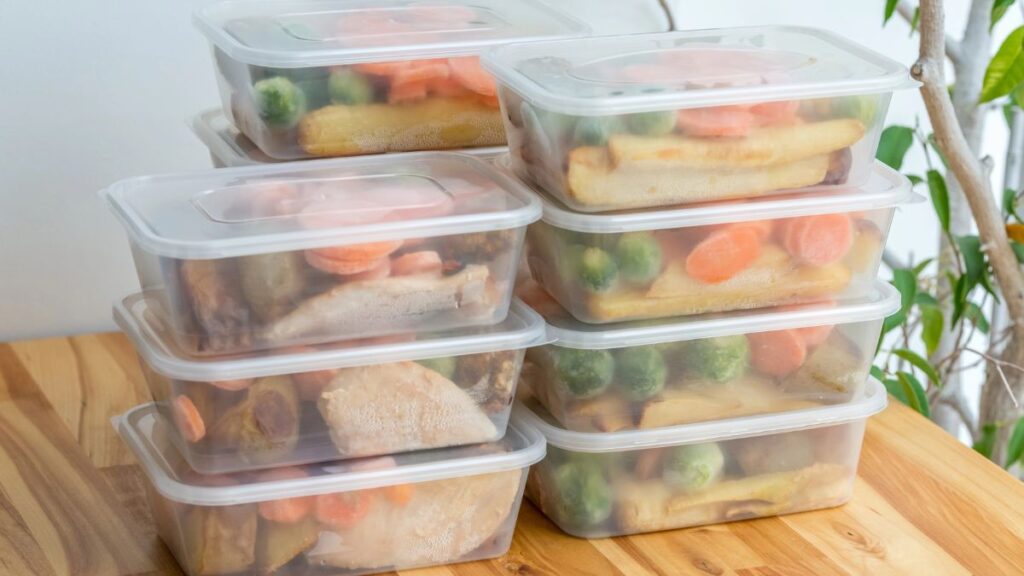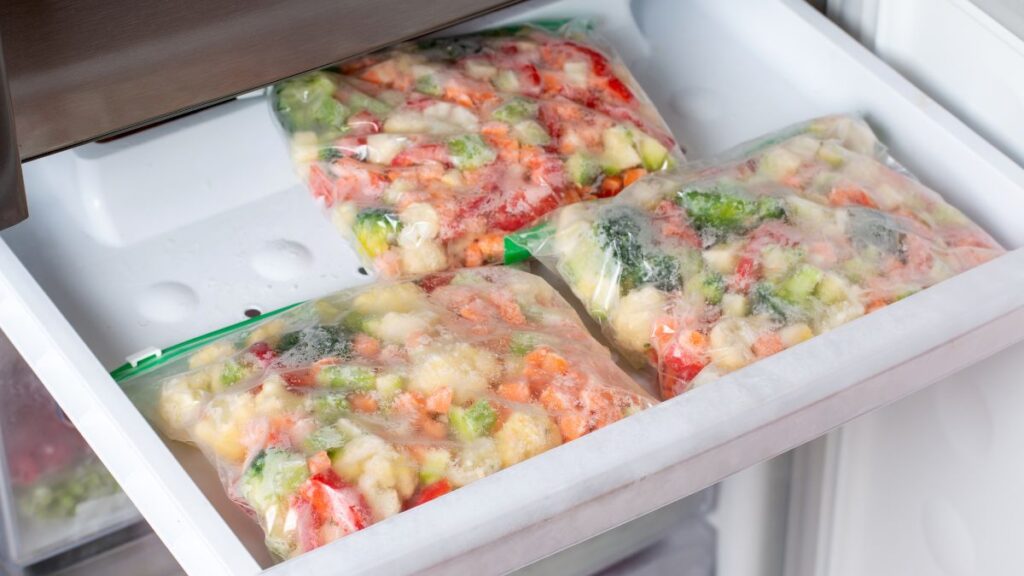15 Proven Hacks to Slash Your Grocery Bill and Save Big
Grocery shopping can quickly become a significant expense, but with a few smart strategies, you can keep your costs under control. These practical tips are designed to help you stretch your budget further and make your grocery run more efficient.
From careful planning to savvy shopping techniques, this comprehensive guide will help you save big on your grocery bills while still getting the food you love.
Plan Your Meals

Meal planning is a powerful way to manage your grocery expenses effectively. By mapping out your meals for the week, you can create a precise shopping list based on what you need. Start by choosing recipes that use similar ingredients to avoid buying more than necessary.
This method helps reduce food waste and ensures you’re not making extra trips to the store. Additionally, meal planning can save you time during the week as you’ll have all your ingredients ready to go. Consistently planning your meals helps you stay organized and makes grocery shopping less stressful.
Create a Shopping List

A detailed shopping list can be a game-changer when it comes to managing your grocery budget. Before you head to the store, take a few minutes to list all the items you need based on your meal plan. This helps you stay focused and reduces the temptation to buy items that aren’t on your list.
Organize your list by store sections to make your shopping trip more efficient and avoid doubling back for forgotten items. Sticking to your list ensures you only buy what you need, helping to prevent unnecessary purchases and keep your spending in check.
Use Coupons Wisely

Coupons can significantly cut down on your grocery bill, but their effectiveness depends on how you use them. Search for coupons in newspapers, online coupon sites, and store flyers. Be sure to use them for products that you actually need and plan to buy.
Combining coupons with in-store sales can further maximize your savings. Additionally, many grocery stores offer digital coupons that can be loaded onto your store loyalty card, making it easy to redeem discounts at checkout. Effective coupon use requires a bit of effort but can lead to substantial savings over time.
Buy in Bulk

Buying in bulk can lead to impressive savings, particularly for items you use regularly. Non-perishable goods such as grains, pasta, and canned foods are ideal for bulk purchasing. Frozen items like meat and vegetables can also be bought in larger quantities and stored for later use.
Ensure you have adequate storage space and that the items won’t spoil before using them. Bulk buying not only saves money but also reduces the frequency of shopping trips, making it a convenient option for many households.
Shop Seasonal Produce

Seasonal produce is often more affordable and fresher than out-of-season fruits and vegetables. By purchasing items that are in season, you can take advantage of lower prices and better quality. Seasonal produce is usually grown locally, which can further reduce costs and support local farmers.
Visit farmers’ markets or check grocery store flyers to find the best deals on seasonal fruits and vegetables. Incorporating these seasonal items into your meals can enhance their flavor and nutritional value while lowering your grocery bill.
Compare Store Brands

Store brands are a great way to save money without sacrificing quality. Often, store brands are produced by the same manufacturers as name brands but come at a lower price. Compare the ingredients and nutritional information between store brands and name brands to ensure they meet your standards.
Many times, store brands offer the same quality at a fraction of the cost. Switching to store brands for staples like cereals, dairy products, and canned goods can lead to significant savings over time.
Avoid Pre-Packaged Foods

Pre-packaged and convenience foods are usually more expensive than preparing meals from scratch. While they can save time, they often come with a higher price tag. Instead, buy whole ingredients and cook meals yourself.
Preparing meals from scratch can also be healthier as you have control over the ingredients used. For example, making your own soups, sauces, and snacks can be more cost-effective and nutritious than buying pre-packaged versions.
Take Advantage of Sales

Keeping an eye on sales and promotions can lead to considerable savings. Check store flyers, apps, and websites for information on upcoming sales and discounts. Stock up on items that are on sale, especially if they are products you use frequently.
Be mindful of expiration dates when buying in bulk to ensure you use the items before they spoil. Additionally, consider joining store loyalty programs or email lists to receive notifications about special offers and discounts.
Use a Grocery Rewards Card

Grocery rewards cards are an excellent way to access exclusive discounts and promotions. Many stores offer loyalty programs that provide discounts on various items or earn points towards future purchases.
Signing up for these programs is usually free and can lead to significant savings over time. Make sure to use your rewards card every time you shop to take advantage of these benefits. Additionally, some programs offer personalized discounts based on your shopping history, which can help you save on products you buy regularly.
Buy Frozen Instead of Fresh

Frozen fruits and vegetables can be a more affordable and convenient option compared to fresh produce. They are often picked at peak ripeness and frozen to preserve their nutritional value. Frozen produce has a longer shelf life, which helps reduce food waste and allows you to buy in bulk.
For example, frozen berries can be used in smoothies or baked goods, and frozen vegetables are great for soups and stir-fries. Incorporating frozen items into your diet can provide variety and save money.
Cook Large Batches

Cooking large batches of food and freezing portions for later use can save both time and money. Prepare large quantities of soups, stews, or casseroles and divide them into individual servings.
Store these portions in the freezer to have homemade, ready-to-eat meals on hand. This method reduces the temptation to order takeout or eat out, which can be more expensive. Large-batch cooking also ensures you have nutritious options available during busy weeks.
Check Unit Prices

Unit prices show the cost per ounce, pound, or other measurement, allowing you to compare different sizes and brands. This helps you determine which option offers the best value for your money. Sometimes, larger packages are cheaper per unit than smaller ones, so paying attention to unit prices can lead to savings.
Buying a large bag of flour might be more cost-effective than purchasing several smaller bags. Checking unit prices can help you make informed decisions and get the most value from your grocery budget.
Avoid Shopping When Hungry

Shopping while hungry can lead to impulsive purchases and buying items you don’t need. Before heading to the store, have a meal or snack to curb your appetite. This simple trick helps you stick to your shopping list and avoid unnecessary items.
When you’re not hungry, you’re more likely to make thoughtful choices and resist the temptation to buy snacks or indulgent treats. This strategy can help you stay within your budget and reduce overall spending.
Grow Your Own Herbs and Vegetables

Growing your own herbs and vegetables can be a rewarding and economical way to enhance your meals. Even if you don’t have a lot of space, you can start a small herb garden on your windowsill or balcony.
Herbs like basil, mint, and cilantro are easy to grow and add fresh flavors to your dishes. You can also grow vegetables like tomatoes, peppers, and lettuce. Growing your own produce saves money and ensures that you have fresh, high-quality ingredients at your fingertips.
Use Leftovers Creatively

Getting creative with leftovers can help you stretch your food budget further and reduce waste. Repurpose leftover meats, vegetables, and grains into new dishes. For example, leftover roast chicken can be turned into chicken salad or added to soups.
Utilizing leftovers creatively prevents food from going to waste and helps you avoid the cost of buying additional ingredients. Developing a repertoire of leftover recipes can make meal planning more efficient and budget-friendly.
15 Foods Only The Wealthy and Elite Can Eat Now

Culinary trends are constantly evolving, and some foods have become more than just sustenance—they’ve become status symbols reserved for the elite.
15 Foods Only The Wealthy and Elite Can Eat Now
15 Practical Ways to Save Money During Retirement

Entering retirement doesn’t have to mean giving up a comfortable lifestyle. With strategic planning and simple adjustments, it’s possible to make the most of your retirement income and enjoy a financially secure life.







